Carpathian mountains
More
Copy link
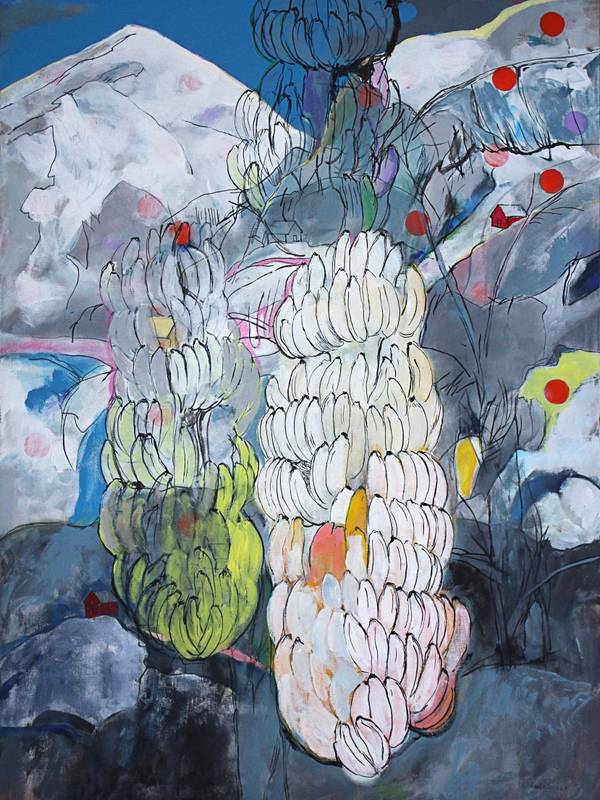
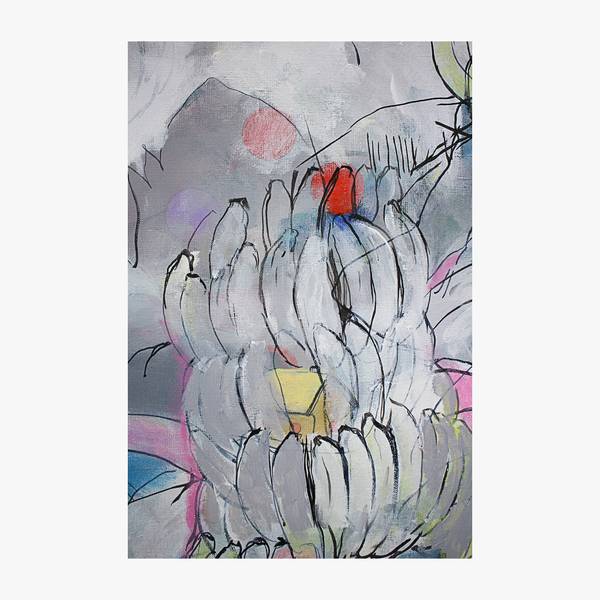
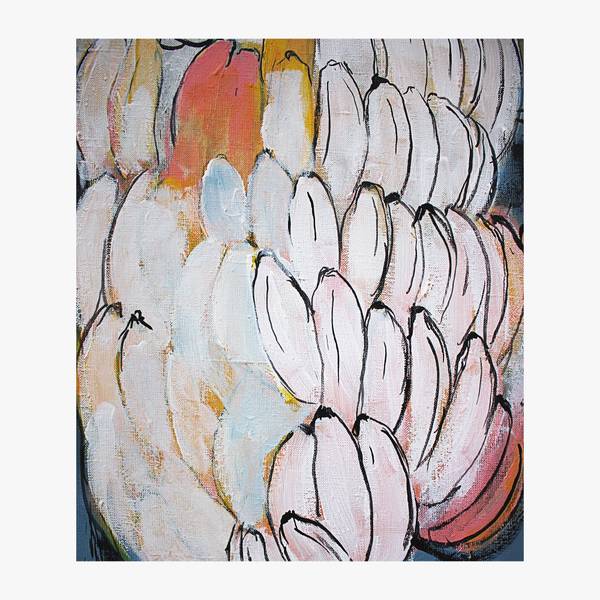
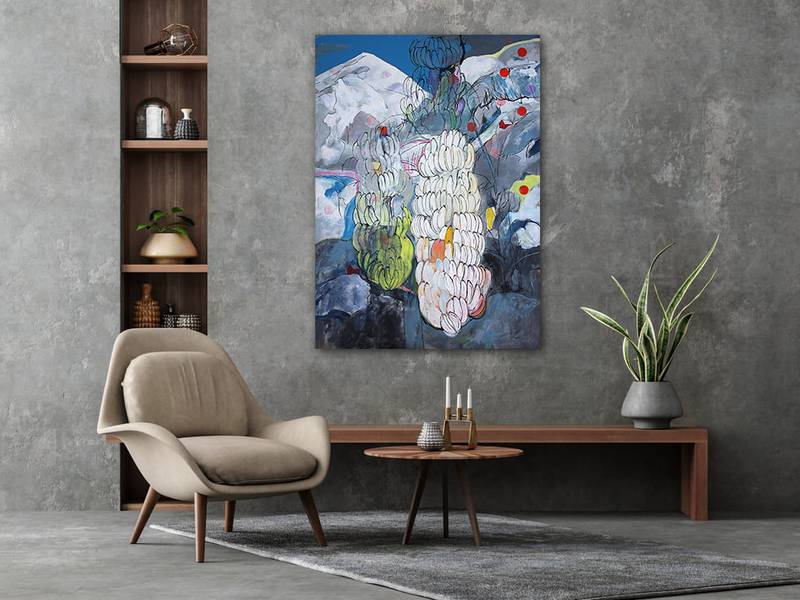
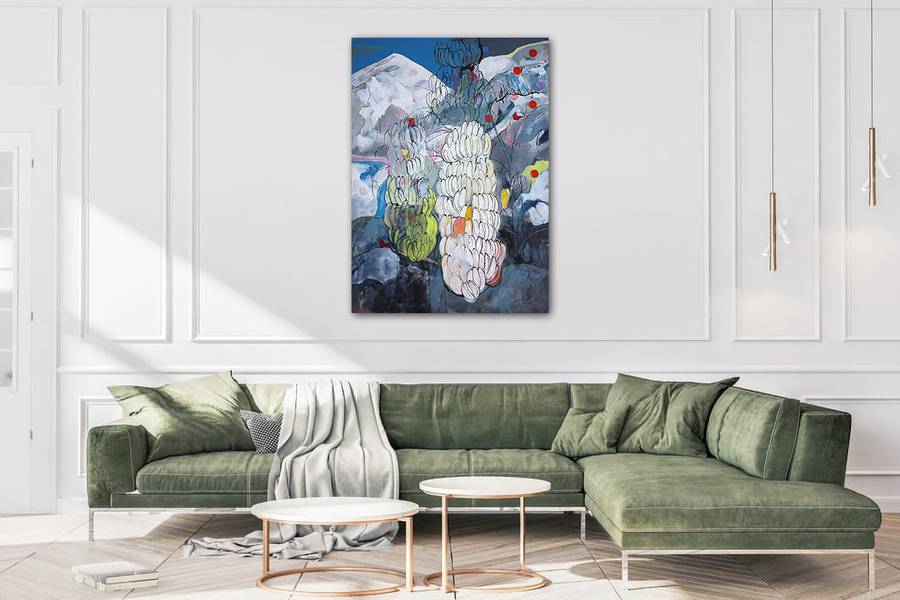
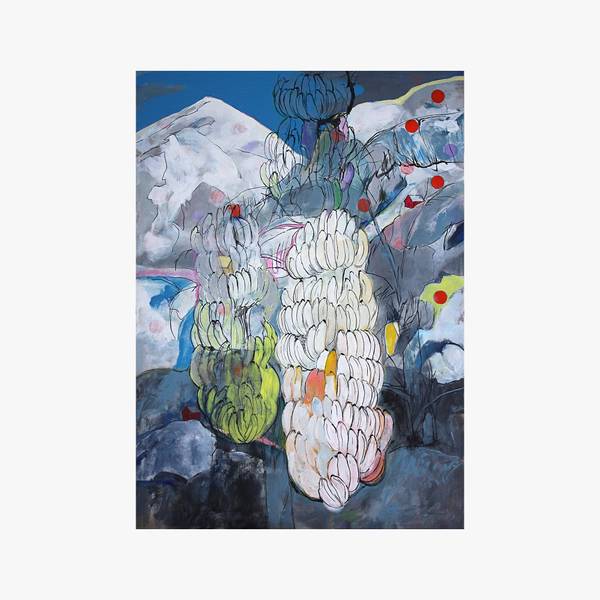
+3
Carpathian mountains
Reflect on...
Expert review
Antoine Clavé
@antoine
With this painting, Artem Andreichuk doesn't simply invite us to contemplate the mountainous Carpathian landscape, he goes one step further by plunging us directly into the creative process.
Andreichuk uses three patterns (the mountains, the banana tree and the circles) as a pretext to highlight his brush and dissect his own technique.
The Carpathian invade the canvas with multiple flat areas of colour. From white with a blue-grey sheen to charcoal black, Andreichuk creates a camaïeu that testifies to his sense of colour. He alternates shades of blue, violet and pink, reminiscent of Impressionist experiments in the wake of Goethe's chromatic theories.
Andreichuk reconciles the modern duel between the colourist Venetian painters and the Florentine draftsmen by choosing to marry his solid colours with his black lines, thus bringing out the relief of the Carpathian. Volumes emerge under his lines, the fruit of the artist's precision and spontaneity, testifying to both a mastery and a certain release of the creative gesture.
Banana trees, a recurring motif in Andreichuk's work, also serve to illustrate the creative process. It is possible to distinguish the three stages that traditionally punctuate the creation of a work: the study drawing (top center), the sketch on canvas (center) and then the colouring (left). Andreichuk exposes us to the creative evolution, as if revealing the secrets of his studio with this iconography so particular to the history of art (thanks Andy Warhol!). Indeed, the gradation of colours in the banana trees resonates with the circles scattered across the canvas. However, these perfect circles also contrast with the rest of the work, as they look like pochoirs or stamps. Andreichuk introduces new, more contemporary ideas this time with the almost mechanical multiplication of these circles, breaking with the single lines of his brush. Between serial stamping, drawing and the use of acrylic, Andreichuk imposes a history of creation in all its forms and evolutions.
Andreichuk uses three patterns (the mountains, the banana tree and the circles) as a pretext to highlight his brush and dissect his own technique.
The Carpathian invade the canvas with multiple flat areas of colour. From white with a blue-grey sheen to charcoal black, Andreichuk creates a camaïeu that testifies to his sense of colour. He alternates shades of blue, violet and pink, reminiscent of Impressionist experiments in the wake of Goethe's chromatic theories.
Andreichuk reconciles the modern duel between the colourist Venetian painters and the Florentine draftsmen by choosing to marry his solid colours with his black lines, thus bringing out the relief of the Carpathian. Volumes emerge under his lines, the fruit of the artist's precision and spontaneity, testifying to both a mastery and a certain release of the creative gesture.
Banana trees, a recurring motif in Andreichuk's work, also serve to illustrate the creative process. It is possible to distinguish the three stages that traditionally punctuate the creation of a work: the study drawing (top center), the sketch on canvas (center) and then the colouring (left). Andreichuk exposes us to the creative evolution, as if revealing the secrets of his studio with this iconography so particular to the history of art (thanks Andy Warhol!). Indeed, the gradation of colours in the banana trees resonates with the circles scattered across the canvas. However, these perfect circles also contrast with the rest of the work, as they look like pochoirs or stamps. Andreichuk introduces new, more contemporary ideas this time with the almost mechanical multiplication of these circles, breaking with the single lines of his brush. Between serial stamping, drawing and the use of acrylic, Andreichuk imposes a history of creation in all its forms and evolutions.
Artwork details
This captivating acrylic painting on canvas is a mesmerizing fusion of nature and imagination. Towering banana clusters, both ripe and unripe, dominate the foreground with their organic, flowing forms, drawn with expressive black outlines. The contrast between soft pastel shades and vibrant splashes of yellow, green, and red adds a dreamlike quality to the composition.
Set against a dramatic mountainous backdrop, the artwork exudes an almost surreal atmosphere—where the natural world appears both familiar and fantastical. The tiny red-roofed houses nestled within the landscape hint at human presence, adding a poetic sense of scale and mystery.
A bold and evocative piece that invites the viewer to explore its rich textures and hidden stories—available for purchase!
Category
PaintingDimensions (WxHxD)
100cm x 140cm x 2cm
Style
ModernSubject
Landscapes, sea and skyYear
2018
Edit reflection
Reflect on...
More
Edit
Delete
Are you sure?
You can't restore reflection after it has been deleted.
